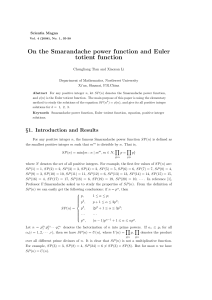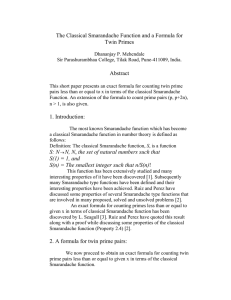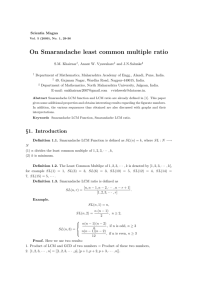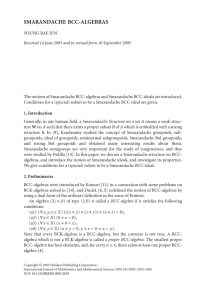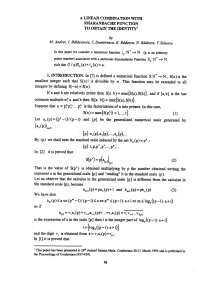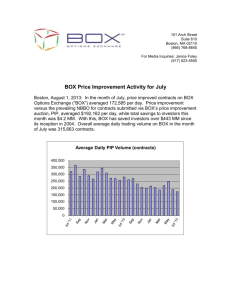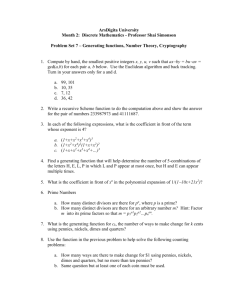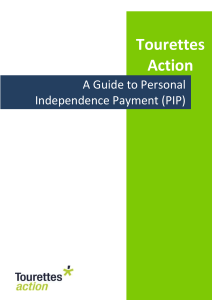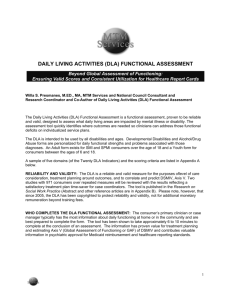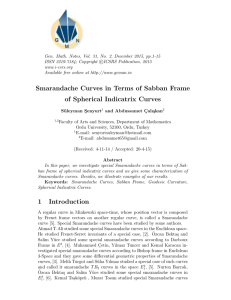About Smarandache-Multiplicative Functions Sabin Tabirca Bucks
advertisement
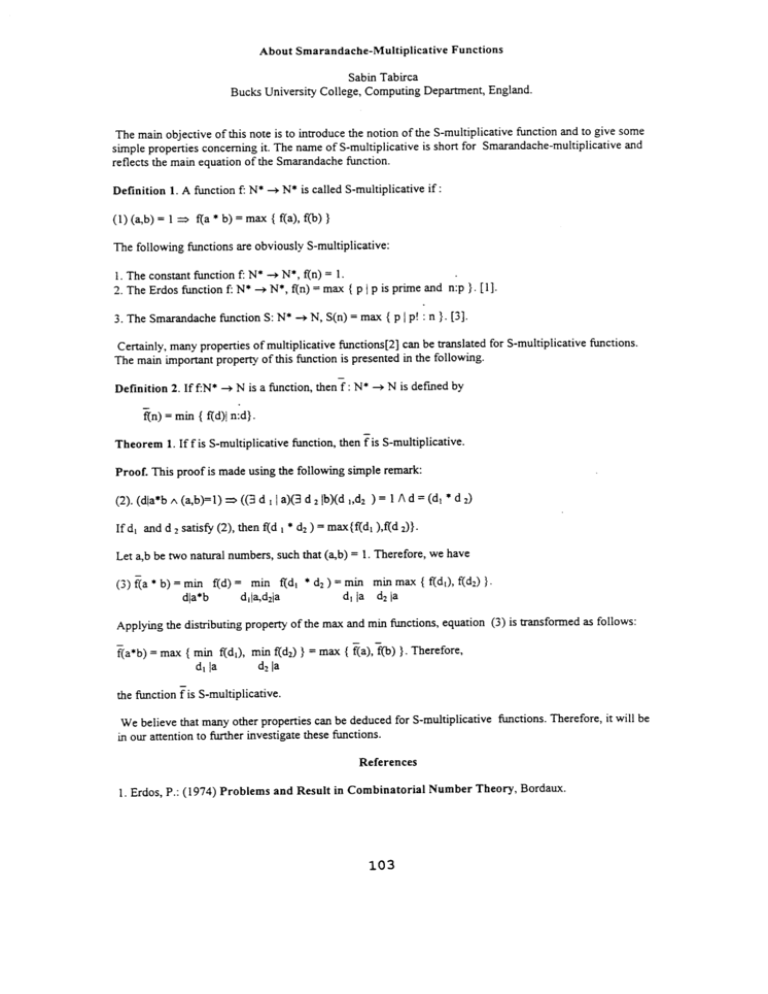
About Smarandache-Multiplicative Functions
Sabin Tabirca
Bucks University College, Computing Department, England.
The main objective of this note is to introduce the notion of the S-multiplicative function and to give some
simple properties concerning it. The name ofS-multiplicative is short for Smarandache-multiplicative and
reflects the main equation of the Smarandache function.
Definition 1. A function f: N* -+ N* is called S-multiplicative if:
(1) (a,b) = 1 => f(a * b) = max { f(a), f(b)}
The following functions are obviously S-multiplicative:
1. The constant function f: N* -+ N*, f(n) = 1.
2. The Erdos function f: N* -+ N*, f(n) = max { pip is prime and n:p }. [1].
3. The Smarandache function S: N* -+ N, Sen) = max { pip! : n }. [3].
Certainly, many properties of multiplicative functions[2] can be translated for S-multiplicative functions.
The main important property of this function is presented in the following.
-
Definition 2. Iff:N* -+ N is a function, then f: N* -+ N is defined by
-
f(n) = min {f(d)1 n:d}.
-
Theorem 1. Iff is S-multiplicative function, then f is S-multiplicative.
Proof. This proof is made using the following simple remark:
(2). (dla*b
1\
(a,b)=I) => «3 d I 1a)(3 d 2Ib)(d hd2 ) = 1 Ad = (d l * d 2)
If d l and d 2 satisfy (2), then f( d I * d2 ) = max {f(d l ),f(d 2)}.
Let a,b be two natural numbers, such that (a,b) = 1. Therefore, we have
-
(3) f(a * b) = min fed) = min f(d l * d2 ) = min min max {f(d l), f(d 2)}.
dla*b
d lla,d2la
d l la d2 la
Applying the distributing property of the max and min functions, equation (3) is transformed as follows:
-
-
-
f(a*b) = max {min f(d l), min f(d 2) } = max { f(a), f(b) }. Therefore,
dlla
d2 1a
-
the function f is S-multiplicative.
We believe that many other properties can be deduced for S-multiplicative functions. Therefore, it will be
in our attention to further investigate these functions.
References
1. Erdos, P.: (1974) Problems and Result in Combinatorial Number Theory, Bordaux.
103
2. Hardy, G. H. and Wright, E. M.,:(l979) An Introduction to Number Theory, Clarendon Press,
Oxford.
3. F. Smarandache:(l980) 'A Function in Number Theory', Analele Univ.
Timisoara, XVIII.
104
